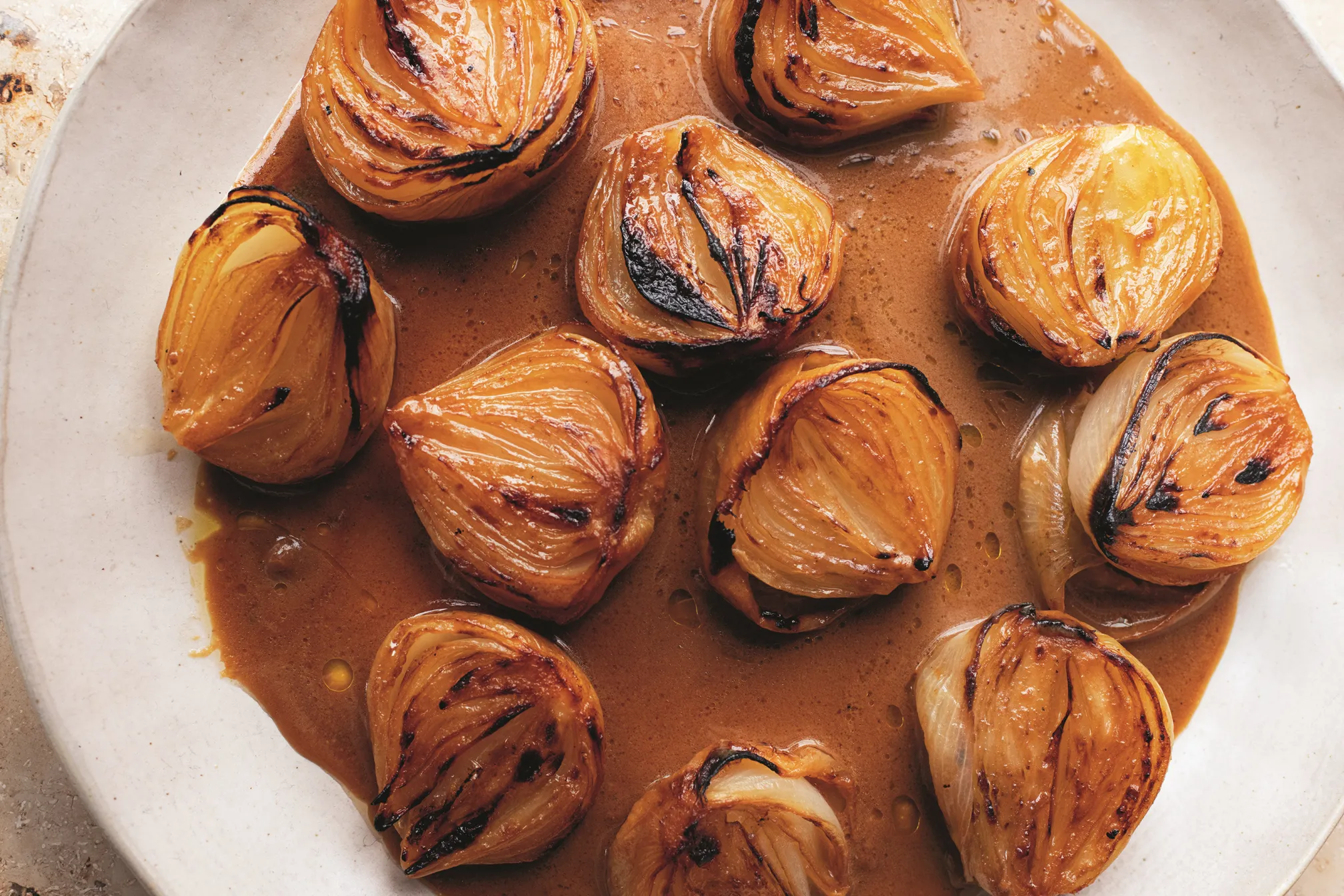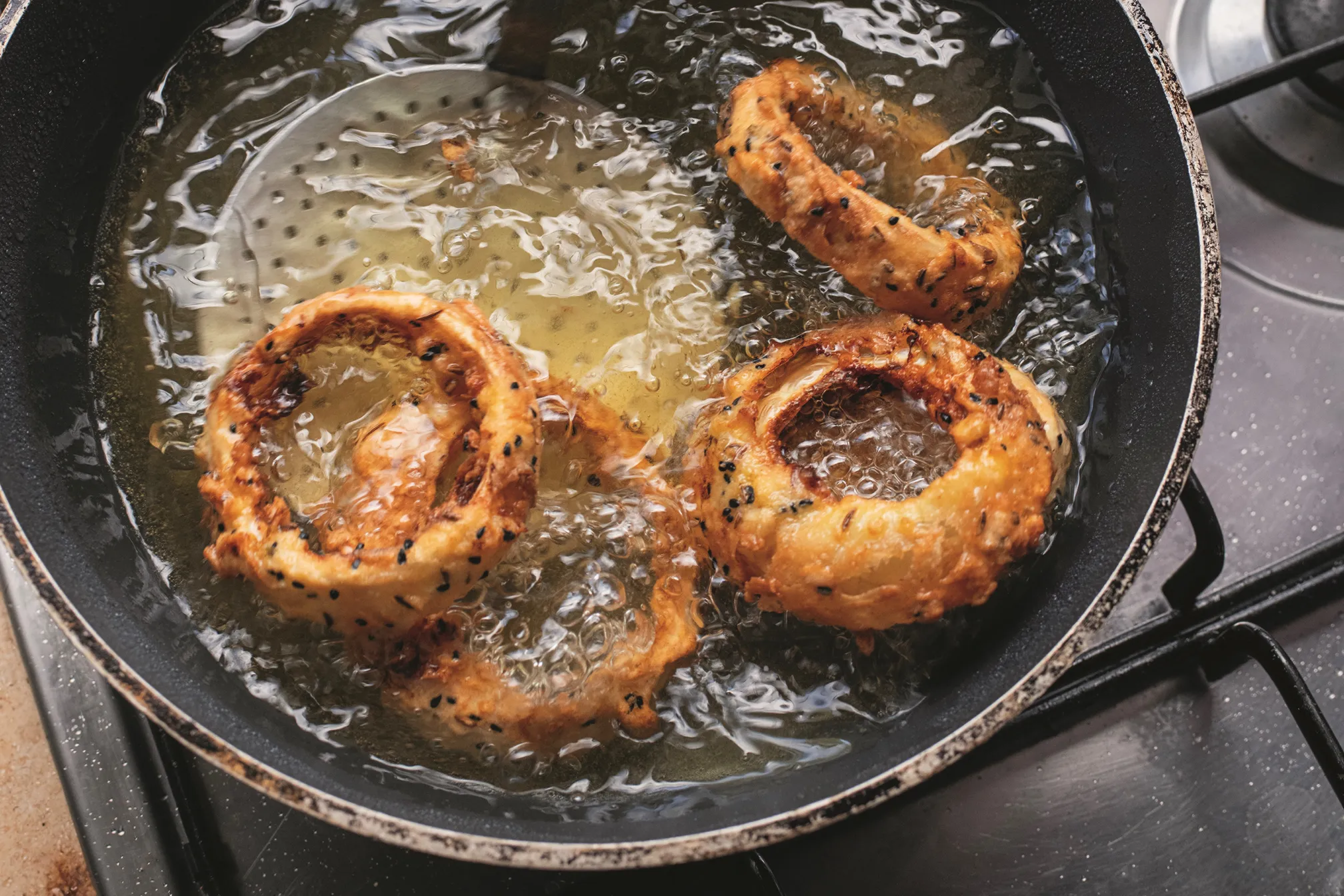Nigel and Jonathan's onions
- rosemary
- Nov 10, 2024
- 6 min read
"There is no point in hurrying an onion – other than those you dip into batter and dunk into bubbling oil. They need time." Nigel Slater
I'm probably going to annoy you because I guess this is yet another ode to Nigel Slater's brilliance, but I am a bit lacking in inspiration so I thought I might find something from all the yellow stickers that festoon his book Tender Volume 1, which sits on my desk.
So I started checking them all out, and about halfway through the book came across the photograph on the left above. I was so blown away by its beauty when I first saw it, that it got one of the yellow stickers. It is, of course, taken by Jonathan Lovekin, widely regarded as possibly the top food photographer in Britain, maybe the world. Photographer full stop really, having now looked at some of his landscapes. So I thought I would try to bring him into this post a little more. Which inevitably brought in Ottolenghi as well - because he photographs for him too.
I searched for photographs of Jonathan Lovekin, but there were none on the net. Not one, which tells me that he must be a very private person and does not want to be recognised or known. But in the back of Ottolenghi's latest book Comfort which has a couple of pages of collages of photographs of those involved in the making of the book I found the two above - Jonathan at work. Below are the finished photographs - Chocolate mousse with orange caramel on the left and Brownie cookies with tahini cream and halva on the right (recipe not online as yet):
I also could not find out much about the man himself. In Goodreads I found the most information - first camera at the age of 18, Kent Institute of Art and Design, work in advertising, then at the age of 22 setting up on his own working for magazines such as Elle Deco, which caught Nigel's eye and since then he has been Nigel's only photographer - in one interview with NIgel, which was a while ago, he said he had been working with him for 30 years. And, as I said, Ottolenghi - and others use him too.

A final word on Jonathan, just to demonstrate how well-respected and known he is. Back in 2014 he was invited to run a workshop on Food, light, still life and landscape which for 4 nights, and 3 days in Seattle which would cost you US$2549 - fare not included - although accommodation and food was. Which I think demonstrates how prestigious a name his is. This is an example of his landscape work - work which one of the organisers of that workshop describes thus:
"His use of light evokes so much emotion and there is such whispering simplicity in his work. An English moodiness I love." Canelle et Vanille
'whispering simplicity' - lovely phrase and apt too.
It's obviously a symbiotic relationship with Nigel who calls him Jonny and thanks him for his pictures and his friendship. It's interesting to contemplate really how much of a part the photographer plays in the fame of the recipe writer. These days one expects glossy photographs of the food the recipe writer is hoping that you will make, and I'm guessing that unless the author has a name, the book just won't sell. That said I do have a couple with no photographs at all - one by Joel Robuchon - but then that is a kind of encyclopedic work. We get used to the glossy photographs though. When I started cooking and using those Penguin cookery handbooks by the greats - without photographs - I was not concerned at all. I just read the recipe and chose what to cook on what I read - and often that did not include enticing little stories, tips or descriptions. Just a recipe plain and simple. I guess it's an example of ignorance is bliss. Once you have something better, it's difficult to go back. A topic for another day perhaps.
But back to onions - and the onions in Nigel's book Tender Volume 1 in particular. His chapter on onions begins with this prose poem on the onions on the left at the top of the page:
"I regard a baked onion as a fine but humble supper. It will probably have been steamed first to keep its flesh juicy, then left in a low oven to bake with a little butter and salt until its translucent golden layers are at the point of collapse. Its edges may have caught and even blackened here and there, and the few juices may come embellished with a little cream and grated pecorino or perhaps our own Spenwood. There will be hand-torn bread, and maybe some lightly cooked spinach at its side. Oh and a glass or two of wine, something quite velvety, would do nicely."
Yes I know - it's somewhat pretentious and over the top, even a tiny bit snobby, but also a little sensuous and definitely tempting. Although maybe a bit of a faff - steaming? - for a 'humble' supper. The second photograph at the top of the page is for roasted banana shallots and you can find the recipe - such as it is - here.
Whilst we are on baked onions let me offer a couple more recipes from Nigel - from elsewhere - Baked onions, taleggio sauce and Roast onions, Gruyère, polenta and a similar but different one from Ottolenghi and Ixta Belfrage in the book Flavour - Miso butter onions - a recipe I have been meaning to make for some time. All photographs from Jonathan of course.
Nigel's treatise on onions in Tender Volume 1 includes a couple of stew/casserole dishes - A simple stew of onions, beer and beef and A stew of oxtail and onions for a cold night, which alas has no recipe online, but I include it because of the photograph - after all I think it was Nigella who said that it was difficult to make 'brown' food look tempting, but these two almost do:
Nigel also has some words of wisdom on stews and the part that onions play in them.
"Onions are often described at the backbone of a stew, a sauce, a casserole. I think of them more as the heart of a dish, their vital activity rarely considered quietly beating away in the background. They provide sweetness, mellowness, depth, warmth, tenderness, suavity and body, and the way in which we treat them in the pot is crucial. Why we must never hurry the onion's slow progress towards sweetness or burn its delicate edges, or, worst of all, fail to cook them enough. Get the onion part of a dish right and you are halfway towards a good supper. Get them wrong and no amount of cooking and clever stunts can quite put matters to rights."
The onions chapter is inevitably one of the longest in the book and almost all of the recipes within it are enticing - here are the rest of the titles: A classic meat and onion pie; An onion rabbit; Roast lamb, couscous, red onion; Grilled gammon, baked onions - why oh why can't we get gammon here?; Shallots with raisins and cider vinegar; Lentil soup with lemon, pancetta and mint; Onion soup, Madeira and Gruyère toasts; Baked onions, porcini, cream; Couscous, red onions, parsley, pine kernels.
Enough of Tender Volume 1 - two more honourable mentions because of Jonathan Lovekin's photographs: Cheese and onion tart - from Nigel, a sightly different version I think from the one that I wrote about, made and adored some time ago - Elizabeth vs Nigel - pastry, onions, cheese and Fried onion rings with turmeric and buttermilk - from Ottolenghi and Ixta Belfrage in Flavour again.
So there you go - onions, Nigel and Jonathan, all of which will doubtless reappear here and there, now and again. Because I love all three. Last words from Nigel:
"Winter is the best time for cooking onions. Stored for several months, their flesh contains less water, and so produces less steam as they cook. Without excess moisture, they brown more effectively. Some sticky Marmite-like goo will appear on the pan and that is all to the good. Stir it in so it can gently stick itself to the glossy alliums."
Although we are warming up towards summer.
BACK THEN
November 10
2023 - Nothing
2022 - Nothing
2021 - Titbits
2020 - Another 'popular' blog
2019 - Nothing
2016 - Trying something new



























I love a bit of onion whatever the weather, a little burnt by choice and definitely not boiled. So I understand that Cooks (and by Cooks I mean the cooks that make a name for themselves telling others what to cook) - place them at the heart of a good meal!